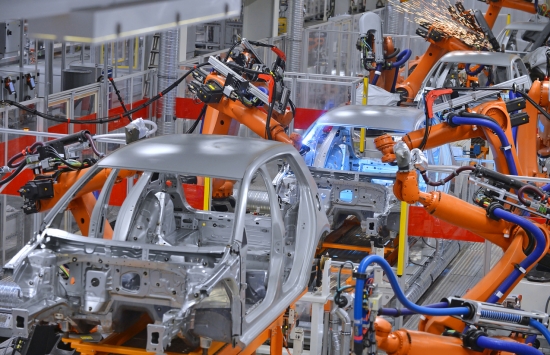2 minute read
Manufacturing PMI at 30-month high
As growth of output and new orders strengthened, the UK manufacturing sector ended 2016 on a positive note. Rates of growth for production and new orders in December were among the best seen over the past two-and-a-half years. Companies benefited from stronger inflows of new work from both domestic and overseas clients, the latter aided by the boost to competitiveness from the weak sterling exchange rate.
The seasonally adjusted Markit/CIPS Purchasing Managers’ Index (PMI) rose to a 30-month high of 56.1 in December, up from 53.6 in November and well above its long-run average (51.5). The headline PMI has signalled expansion in each of the past five months boosted with improved domestic and overseas demand.
December saw output expanded to meet the needs of stronger new work inflows. Growth of production and new business was broad-based by sector, with strong gains registered across the consumer, intermediate and investment goods industries. However, the increases seen at consumer goods producers were relatively mild in comparison to those seen in the other sectors.
New export business rose for the seventh successive month in December. Furthermore, the rate of growth was the second-highest since early- 2014, bettered only by that signalled in September 2016. Companies reported increased levels of new work from the USA, Europe, China, Middle East, India and other Asian markets.

UK Manufacturing PMI hits 30-month high
Improved inflows of new business led to a slight increase in backlogs of work in December, the first rise since February 2014. This combination of higher output, new orders and work-in-hand encouraged manufacturers to expand capacity.
Employment rose for the fifth consecutive month in December, with the pace of jobs growth accelerating to the fastest in 14 months. SMEs saw the steepest expansion of staffing levels, although large-scale producers registered a modest increase too.
Price pressures remained elevated in December. Rates of inflation for input costs and output charges both remained among the fastest seen during the survey history, albeit both slowing from October’s highs.
The increase in purchase prices was the eighth in as many months. Companies linked this to the weak exchange rate driving up import costs. Among firms offering a reason for higher input prices, 75% made some reference to the exchange rate (compared to 90% in October and 84% in November). There was also mention of the rising cost of commodities like oil and steel.